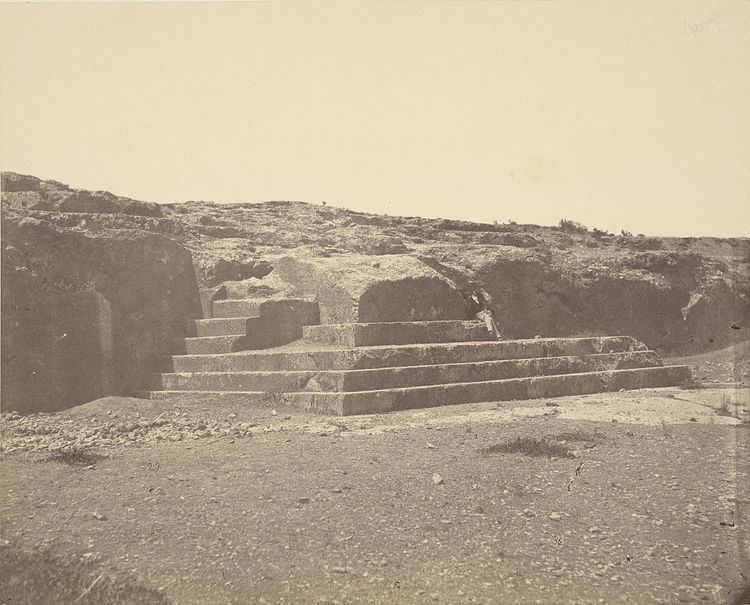 | ||
The bema, or bima, is an elevated platform used as an orator's podium in ancient Athens. In Jewish synagogues, it is also known as a bimah and is for Torah reading during services. In an Orthodox Jewish synagogue, a bema is the raised area around the aron kodesh, or the sanctuary. In antiquity it was made of stone, but in modern times it is usually a rectangular wooden platform approached by steps.
Contents
Ancient Greece
The Ancient Greek bema (βῆμα) means both ‘platform’ and ‘step’, being derived from bainein (βαίνειν, ‘to go’). The original use of the bema in Athens was as a tribunal from which orators addressed the citizens as well as the courts of law, for instance, in the Pnyx. In Greek law courts the two parties to a dispute presented their arguments each from separate bemas.
By metonymy, bema was also a place of judgement, being the extension of the raised seat of the judge, as described in the New Testament, in Matthew 27:19 and John 19:13, and further, as the seat of the Roman emperor, in Acts 25:10, and of God, in Romans 14:10, when speaking in judgment.
Judaism
The bimah (Hebrew plural: bimot) in synagogues is also known as the almemar or almemor among some Ashkenazim (from the Arabic, al-minbar, meaning ‘platform’).
The post-Biblical Hebrew bima (בּימה), ‘platform’ or ‘pulpit’, is almost certainly derived from the Ancient Greek word for a raised platform, bema (βῆμα). (A proposed link to the Biblical Hebrew bama (בּמה), ‘high place’ is far less likely.)
Among the Sephardim, it is known as a tevah (literally ‘box, case’ in Hebrew) or migdal-etz (‘tower of wood’).
It is typically elevated by two or three steps, as was the bimah in the Temple. At the celebration of the Shavuot holiday when synagogues are decorated with flowers, many synagogues have special arches that they place over the bimah and adorn with floral displays. The importance of the bimah is to show that the reader is the most important at that moment in time, and to make it easier to hear their reader of the Torah. A raised bimah will typically have a railing. This was a religious requirement for safety in bimah more than 10 handbreadths high, or between 83 and 127 centimetres (2.72 and 4.17 ft). A lower bimah (even one step) will typically have a railing as a practical measure to prevent someone from inadvertently stepping off.
The bimah became a standard fixture in synagogues from which a portion (parashah) from the Torah and the haftarah are read. In Orthodox Judaism, the bimah is located in the center of the synagogue, separate from the Ark. In other branches of Judaism, the bimah and the Ark are joined together.
Christianity
The ceremonial use of a bema carried over from Judaism into early Christian church architecture. It was originally a raised platform with a lectern and seats for the clergy, from which lessons from the Scriptures were read and the sermon was delivered. In Western Christianity the bema developed over time into the chancel (or presbytery) and the pulpit.
In Eastern Christianity bema remains the name of the platform which composes the sanctuary; it consists of both the area behind the iconostasion and the platform in front of it from which the deacon leads the ektenias (litanies) together with the ambo from which the priest delivers the sermon and distributes Holy Communion. It may be approached by one or several steps. The bema is composed of the altar (the area behind the iconostasion), the soleas (the pathway in front of the iconostasion), and the ambo (the area in front of the Holy Doors which projects westward into the nave). Orthodox laity do not normally step up onto the bema except to receive Holy Communion.
